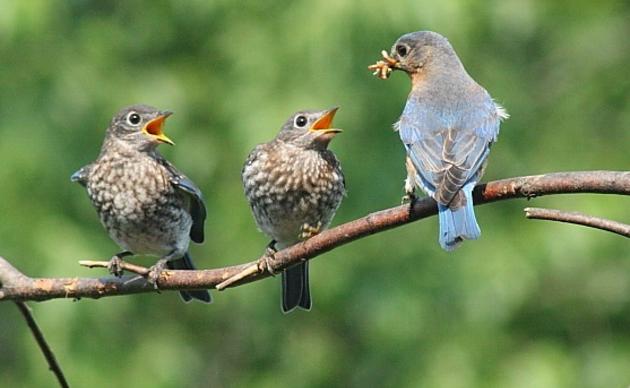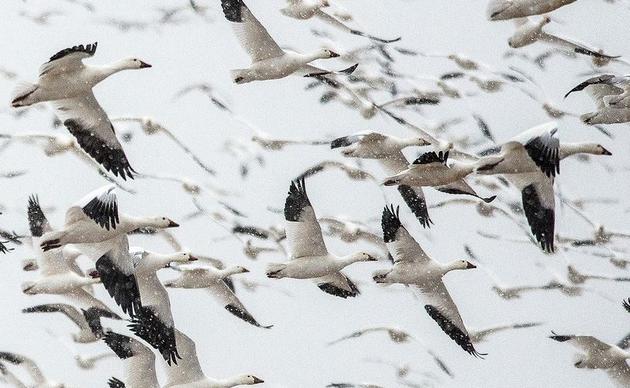Originally posted in the Rochester Democrat & Chronicle by Leo Roth
Nov. 23, 2014
Bill Kalwas enjoys the challenge of hunting any kind of waterfowl. Still, nothing quite compares to the satisfaction of putting an American black duck in his game bag.
“They’re a cool bird to hunt,” said Kalwas, 32, of Scottsville who has been hunting ducks and geese since boyhood. “Some days they pour in and you’d think they were the dumbest bird in the world. And other days they just circle and circle, maybe give you a look and just fly off. They can be either the easiest bird to hunt or the wariest, really no middle ground in my experience. I’ve always had a soft spot in my heart for them.”
He’s not alone.
The black duck was once king in the Atlantic Flyway, but its population steadily declined between the 1950s and 1980s. Today, thanks to their underabundance, black ducks are a coveted migratory bird for waterfowl hunters and a focus species for wildlife researchers and conservation groups concerned about the future of the species.
In 1989, the Black Duck Joint Venture was founded to coordinate efforts by state and federal agencies in the U.S. and Canada. Overharvesting, habitat loss/degradation and competition from the more adaptable mallard are among the factors researchers have focused on.
“It was a slow decline until about the 1980s when they changed the bag limits,” said wildlife technician Frank Morlock, who heads the DEC’s black duck research at the Northern Montezuma Wildlife Management Area field office. “They’re not in a steep decline currently. … But we’re putting a lot of effort into figuring this out.”
Bag limits tell part of the story. Hunters can take four mallard ducks per day and just one black duck. Limiting harvest has had a positive impact on leveling off population decline.
To grow the black duck population will take ongoing efforts to protect and restore marshlands where ducks feed, breed, rest and nest. Researchers are also focusing on the impact of hybridization — mallards breeding with black ducks.
From the Lake Ontario shoreline inland, central and western New York is blessed with state and federally owned expanses of upland and wetland habitat, providing ample opportunity to hunt migratory game birds. Regulations and dates for the 60-day split season for ducks can be found at www.dec.ny.gov.
The Montezuma Wetlands Complex, which includes federal, state and privately managed lands, encompasses 50,000 acres of prime waterfowl habitat in Wayne and Seneca counties. Waterfowl migration here is jaw-dropping — literally hundreds of thousands of Canada geese and snow geese fill the sky on certain days. Ducks, too, including mallard, wood and black.
In the complex, the DEC, U.S. Fish & Wildlife Service, Ducks Unlimited and countless volunteers continue to conduct research surveys, banding projects and habitat improvement work, like pothole digging and berm construction in the Montezuma National Wildlife Refuge that has created pools and helped restore the hydrology altered by construction of the Thruway decades ago.
“All of this work benefits all ducks, geese and swans but one of the focal species is American black duck,” said Chris Lajewski, director of the Montezuma Audubon Center, located on Route 89 within the complex. “There are other species we’re concerned about, too, which is why it’s critical we have large expansive habitats like Montezuma Wetlands Complex.”
A good population of black ducks winter over at nearby Cayuga Lake where a very productive five-year banding project has taken place. Wildlife biologists and technicians, with the help of volunteers, use “confusion nets” that funnel the birds inward where they can be caught, banded and released. Morlock said his crew has banded anywhere from 150 to 300 black ducks a season.
“We band a lot of ducks when they over-winter in the Finger Lakes region,’’ he said. “Any other time of year, we have a hard time getting many, if any. During the winter they are concentrated in those open waters.”
A close cousin to the mallard, a black duck is actually “dusky’’ colored. Both the drake and hen look similar, with a handsome purple wing patch. In flight, black ducks are distinguishable from mallards by a white underwing. Hybrids sport characteristics of both ducks, for example, a duck with dark plumage and the partially colored green head of a mallard drake.
Hybrids make waterfowl identification even more challenging.
“You do get some interesting ones,’’ said Kalwas, president of the Finger Lakes and Western New York Waterfowl Association. “My take has always been that if it’s close enough where you can tell it’s even a hybrid, I count it in the bag as a black duck and call it my one for the day.”
After Hurricane Sandy hit the East Coast in 2012, Kalwas said he had great success on black ducks in a tiny marsh he hunts in Monroe County.
Unlike mallards, black ducks are a bit more skittish, making them resistant at times to a helping hand from man. The FL&WNY Waterfowl Association, working with DEC, maintains nesting tubes throughout the region, and Kalwas noted that black ducks do not take to them like mallards and are easily spooked.
“Those mallards will nest on those tubes right up against a highway or near somebody’s house and they’re fine,” he said.
Morlock said mallards aren’t necessarily dominant, just very adaptable to many habitats.
“They have been able to expand their range east and really do well,’’ he said. “I hate to call them the culprit, but the mallard’s eastward expansion put a real dent in the black duck population.’’
While black ducks are hard to locate some days, waterfowl hunters and educators dedicated to conservation are not.
Lajewski, a 1993 Pittsford Mendon graduate and a trained geologist, coordinates myriad nature education programs many with sportsmen and their families in mind.
Waterfowl hunters in particular generate a ton of economic activity in the state, making it “critical that we engage the sportsmen community,’’ Lajewski said. “The money they spend on licenses and equipment goes directly back into conservation projects like those we have here at Montezuma. We wouldn’t have all of this wonderful habitat to enjoy if not for sportsmen, so we’re proud to partner with these groups.’’



